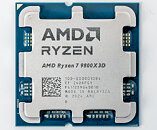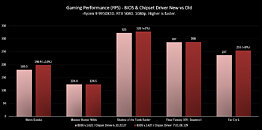Eight-Core CPUs Become the Most Popular Choice of PC Users, CPU-Z Stats Show
CPU-Z's Q1 2025 validation data indicates a new trend in CPU core count preferences among PC users. Eight-core processors now account for 24.7% of all validations, a significant increase of 32.6% compared to previous data. In contrast, six-core processors have declined to 22.5% of validations, down by 6.9%. The higher core count of eight-core CPUs aligns with the increasing demand for multithreaded performance in various computing environments, from professional workstations to high-end gaming systems. Market share figures also reveal adjustments in consumer preferences regarding CPU manufacturers. Intel retains a majority of presence with 56.3% of the market. However, AMD's share has risen notably at 43.7%, representing a 16.6% increase from the previous year.
The shift in market shares suggests that users are increasingly drawn to AMD's offerings, which include competitive eight-core processors. A key contributor to the trend toward eight-core CPUs is the rising popularity of specific models. The Ryzen 7 9800X3D, for example, has significantly impacted this new statistic, becoming the most popular CPU according to the CPU-Z validations. This indicates that users are interested in eight-core offerings with 3D V-Cache technology for increased gaming performance. The shift away from six-core configurations, which now represent a smaller portion of the validation data, shows that eight cores are now a sweet spot for many gamers. For multitasking and gaming, it seems like a perfect choice.
The shift in market shares suggests that users are increasingly drawn to AMD's offerings, which include competitive eight-core processors. A key contributor to the trend toward eight-core CPUs is the rising popularity of specific models. The Ryzen 7 9800X3D, for example, has significantly impacted this new statistic, becoming the most popular CPU according to the CPU-Z validations. This indicates that users are interested in eight-core offerings with 3D V-Cache technology for increased gaming performance. The shift away from six-core configurations, which now represent a smaller portion of the validation data, shows that eight cores are now a sweet spot for many gamers. For multitasking and gaming, it seems like a perfect choice.
















































